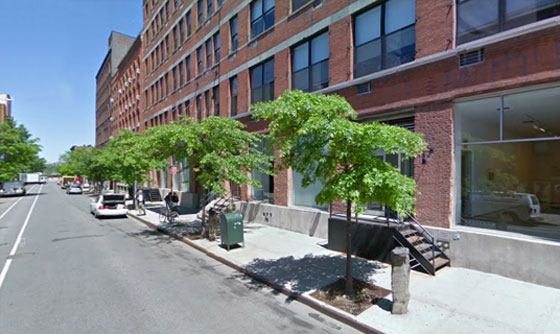Last night’s New Curators, New Ideas IV at Meulensteen, formerly Max Protetch, reminded us how little remains of the respected gallery Protetch sold just under two years ago. It’s hard to imagine Protetch ever doing something so tacky as stationing two gallerinas outside the gallery with iPads and a guest list, but that’s what we witnessed last night. Surely, this kind of exclusivity can’t benefit a show meant to give exposure to new talent.
We’ll take a look at the show in the coming months, but in the meantime, let’s take a look at some of the changes we’ve seen over at Meulensteen. Almost none of them are good.
SALE RATIONALE
In 2010, Max Protetch told The Art Newspaper that selling the gallery was an economic decision: “There is a recession, and while I am quite adept at getting through it, I don’t enjoy it.” Max Protetch went on to add that he sold the gallery, rather than shutting its doors, because he wanted to keep the staff and the gallery’s artist roster intact. Well, that didn’t happen.
STAFF CHANGES
Dutch-born businessman Edwin Meulensteen bought the gallery in 2010. This is his first time as a gallery owner and director, and his first gallery job ever. He grew up around art, however; his parents are collectors, and his dad, Gerard H. Meulensteen, founded the Meulensteen Art Museum in Bratislava, Slovakia. The museum looks like a resort, resting on a well-manicured peninsula; it’s the type of place that could make your Slovakian vacation dreams come true.
After the change in ownership, the gallery’s administrative staff started changing, too. Director Josie Browne left this year, after more than twenty years at the gallery. Eric Gleason took on the Meulensteen directorship in February 2012, coming from a job at Marlborough Chelsea. At Marlborough, he worked on that Rashaad Newsome jousting flop and a handful of other events that were intended to give the gallery a more youthful vibe. The most successful of these was probably William Powhida’s fake Powhida show, which aimed to critique and implicate anyone who even looked at the exhibition in the corruptness that defines the art world. Paddy Johnson speculated over Twitter today whether Gleason was responsible for the guest list. It has a Marlborough flavor to it.
ARTIST ROSTER CHANGES
In October 2010—around the same time as Max Protetch left the gallery—a Wikipedia page listing the gallery’s artists at that time appeared. A brief look at Meulensteen’s current roster shows that the following artists no longer show at the gallery:
Siah Armajani (independent)
Hai Bo (Pace/MacGill Gallery)
Saul Chernick (independent)
Zach Harris (independent; just had a solo show at David Kordansky)
Oliver Herring (independent)
Ren Jian (independent)
Byron Kim (James Cohan Gallery)
Iñigo Manglano-Ovalle (Christopher Grimes Gallery, etc.)
Ann Pibal (Rhona Hoffman (Chicago))
Tobias Putrih (International representation)
David Reed (now at Peter Blum, Galerie Schmidt Maczollek, Hausler Contemporary)
Gao Shiqiang (1918 Art Space and others)
Betty Woodman (Salon 94)
Nine artists from the Max Protetch roster remain, along with two estates. Most of the gallery’s New York-based artists have left the gallery: only two of the remaining artists from the October 2010 roster reside in New York.
Since Max Protetch’s departure, there have been only three new additions to the Meulensteen roster: Erik Binder, Tian Xiaolei, and Andrea Galvani. Binder is a Slovakian artist; one suspects that, given the Meulensteen family’s connection to that country, his selection came from the top. The other two are pretty much unknown.
GALLERY REPUTATION
Looking through the remaining stable’s exhibition history, Meulensteen isn’t having much success getting its roster into museums and nonprofits; since the switch, none of the gallery’s artists has had an institutional show in a space larger than a college art gallery. For reasons that aren’t entirely clear, Max Protetch stopped participating in the top-tier art fairs back in the mid-2000s. The new owners haven’t gotten the gallery back into Basel, but they haven’t done much harm, either; if Meulensteen is forever a Pulse gallery now, so be it.
That said, it’s hard to cast a positive light on any gallery that so quickly sees an exodus of its artists after a change in ownership. This, more than anything else, has damaged the gallery’s reputation. It suggests poor management and will worry collectors.



Comments on this entry are closed.